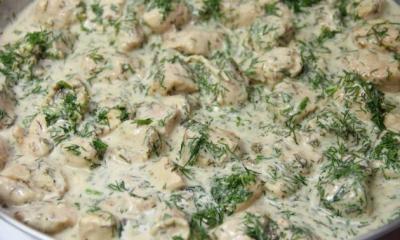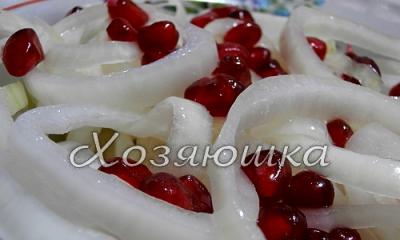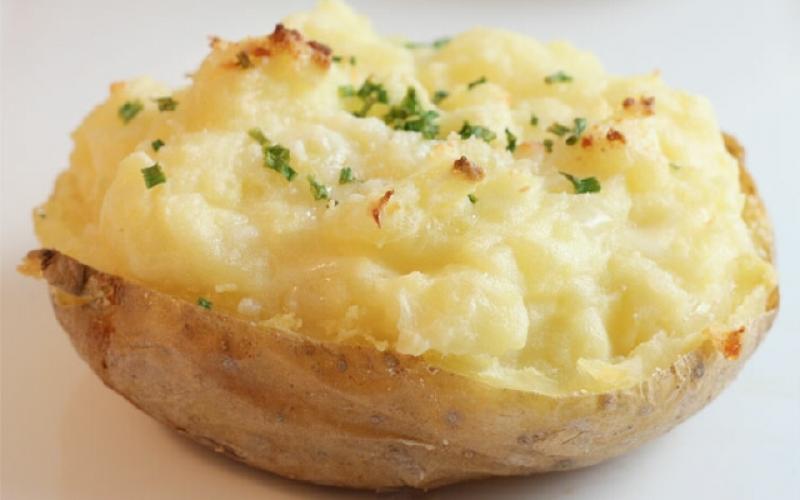Hymn - in ancient Greece - a solemn laudatory song in honor of the gods and heroes; a solemn song adopted as a symbol of state or social unity; a piece of music that expresses an elevated, solemn state.
In Russia, there were simultaneously several national spiritual and patriotic hymns, which originated as a genre of solemn song in the time of Peter the Great. The king liked the vivacious cantes, which were usually performed by the choir during official celebrations. After the conclusion of the Treaty of Nystadt with Sweden in 1721, Peter the Great sang the church hymn "We praise You, God," on his knees. This hymn sounded during prayers, on the days of the name day of members of the imperial family, at the coronation of Russian sovereigns.
Military marches became an integral part of the existence of the army in the era of Peter the Great. The march of the Preobrazhensky Regiment, which became the main military march of Russia, gained particular fame.
The first unofficial anthem of the Russian Empire since 1791 was the polonaise march for choir and orchestra “Thunder of victory, resound!” written by the composer O. Kozlovsky to the words of G. Derzhavin in honor of the capture of the Izmail fortress by Russian troops under the command of Suvorov in December 1790.
Approximately in the same years as “Thunder of victory, resound!”, a certain composer D. Bortnya wrote a hymn to the words of Mikhail Kheraskov “How glorious is our Lord in Zion ...” (Zion was called the abode of God in heaven and on earth). It was performed during religious processions and church parades, at the burial of officers, at ceremonies of promotion to officers, and sounded every evening in the army and navy. The bells of the Spasskaya Tower of the Moscow Kremlin called the "Preobrazhensky March" twice a day and twice "Kol is glorious ...". This continued until October 1917, when these melodies were replaced by the "Internationale" and the revolutionary song "You Fell a Victim."
The first official National Anthem of Russia owes its birth to the victory of Russian arms over Napoleon. In 1813 in St. Petersburg for the first time they performed "The Song to the Russian Tsar" by the poet A. Vostokov to the melody of the English anthem "God Save the King!". Two years later, a new text of the song appeared under the name "Prayer of the Russians", the author of which was the wonderful poet V. Zhukovsky. Alexander I ordered the regimental bands to perform the "Prayer of the Russians" at the meeting of the emperor. So, in 1816, the anthem received an official character. The anthem acquired its final form in 1833, when the officer and composer A. Lvov wrote the music for it. “I,” the author said about this work, “felt the need to write a majestic, strong, sensitive anthem, pleasant for everyone, suitable for the army, suitable for the people - from a scientist to an ignoramus.” Since then, the anthem "God Save the Tsar!" sounded in the army, at the court of the emperor and during civil celebrations. It became the State Anthem of the Russian Empire and was subject to mandatory performance at parades, divorces, at the consecration of banners, at morning and evening prayers in the army and navy ... The official anthem was abolished by the February Revolution.
There were several more melodies that became, in fact, the unofficial anthems of Russia. These are “Glory” from the opera by the outstanding Russian composer M. Glinka, “Life for the Tsar”, dedicated to the feat of the Kostroma peasant Ivan Susanin, and the march “Farewell of the Slav” by the military conductor and composer V. Agapkin. This march sounded in the First World War, and in the Civil War, and during the Great Patriotic War. Under its sounds, the soldiers of the Red Army went to the front line from the parade on Red Square on November 7, 1941.
After the Bolsheviks came to power in 1918, the anthem of the RSFSR, and then the USSR, became the "International" (words
E. Pottier, music by P. Degeyter; translated into Russian by A. Kots) and remained so until 1944, when a new State Anthem of the USSR was created. It was proposed to create it in 1942 by the head of the country, Joseph Stalin. On a competitive basis, preference was given to the text by S. Mikhalkov and G. El-Registan (Ureklyan). The music was written by composer A. Aleksandrov, the author of the Holy War march, which became the musical symbol of the Great Patriotic War. The new State Anthem of the USSR sounded on the All-Union Radio on the night of January 1, 1944, and was introduced everywhere from March 15, 1944.
From the second half of the 1950s, the USSR anthem was performed without lyrics. In 1977, in connection with the adoption of the new Constitution of the USSR, S. Mikhalkov amended the text of the anthem.
The RSFSR for a long time was the only republic of the Soviet Union that did not have its own anthem. Its first performance took place on November 23, 1990 at a session of the Supreme Soviet of the RSFSR. And on November 27, 1990, the anthem was unanimously approved as the State Anthem of the RSFSR. They became a musical work by the composer M. Glinka. The anthem was without words, only music. This unfinished Glinka melody was processed in 1944 by the composer M. Bagrinovsky and called it "Patriotic Song". In 1947, when Moscow celebrated its 800th anniversary, the poet A. Mashistov wrote the words “Hello, glorious capital” to this music, and the song became the anthem of the capital (now it has a different anthem).
On December 11, 1993, the President of the Russian Federation by his Decree approved the National Anthem of the Russian Federation, which “is a melody created on the basis of M.I. Glinka". But it was not approved by the State Duma.
The text of the new anthem of the Russian Federation was approved by the State Duma in December 2000, and on December 30, 2000 - by Decree of the President of Russia V.V. Putin. The music remained from the former anthem and belongs to the composer A.V. Aleksandrov, the words were written by SV. Mikhalkov.
Russia is our sacred power,
Russia is our beloved country.
Mighty will, great glory -
Yours forever!
Chorus:
Hail, our free Fatherland,
Fraternal peoples age-old union,
Ancestors given the wisdom of the people!
Hail country! We are proud of you!
From the southern seas to the polar region
Our forests and fields are spread out.
You are the only one in the world! One you are -
Protected by God native land!
Wide scope for dreams and for life
The coming years open up to us.
Our loyalty to the Motherland gives us strength.
So it was, so it is, and so it will always be!
The procedure for the official use of the National Anthem is established by the Federal Constitutional Law "On the National Anthem of the Russian Federation". It can be performed in an orchestral, choral, orchestral-choir or other vocal and instrumental version, but in strict accordance with the text approved by the musical editors. The national anthem is played at the inauguration of the President of the Russian Federation and heads of state authorities, at the opening and closing of meetings of the Federation Council and the State Duma, in. the time of ceremonies of meetings and seeing off of heads or official delegations of foreign states, military rituals and other solemn events and holidays. The performance of the National Anthem is accompanied by signs of the highest respect - all those present stand up, and the military salute or salute with weapons.
The state symbols of Russia are our shrines, and we should all know their history well and treat them with respect and reverence.
Millions of foreign tourists come to Russia every year. They go to see the homeland of Pushkin and Dostoevsky, admire the Russian ballet and make sure that bears walk on Red Square.
Those who are not attracted by the northern expanses also have their own opinion about our country. They are watching the events sitting on the couch, turning on the TV, and probably without much difficulty they will be able to distinguish the flag of our country from the Union Jack. In this article, we have collected the official and unofficial symbols of Russia, which are most often called by foreigners.
Official symbols of Russia
The coat of arms, flag and anthem are the official symbols of any modern state. They are fixed at the legislative level and personify the identity of the country. Not a single victory of our athletes or a summit meeting can do without them. 
The coat of arms of the state is a distinctive sign, an emblem on which objects of national pride are depicted. The double-headed eagle on the coat of arms of Russia appeared in the Middle Ages. Ivan III, having married the Byzantine princess Sophia, took her family coat of arms, hoping that this gesture would strengthen the position of our country, emphasizing the transfer of the power of the fallen Byzantium to the Russian state.

The Russian flag consists of white, blue and red horizontal stripes. The first flags of Ancient Russia were military banners. They most often met red colors, as the most solemn and beautiful.
At the end of the 17th century, white, blue and red were recognized as the state colors of Russia, and in the Petrine period the current order of the stripes on the flag was also determined. According to legend, it was difficult for sailors to remember the order of flowers, for which they were mercilessly flogged with rods. To avoid punishment, resourceful sailors came up with a word to remember - "besik" - it is impossible to confuse colors with it.

Since then, the colors of the national flag of Russia have periodically changed. The last time, from 1917 to 1989, the red flag was the symbol of the Soviet state, the color of which personified the blood shed by the fighters for a brighter future. On August 24, 1991, the tricolor flag flew over the Kremlin immediately after the decision of the Extraordinary Session of the Supreme Soviet of the RSFSR to recognize it as a state flag.

Hymn. “Russia is our sacred power…” - these words, sounding at the most solemn moments, belong to Sergei Mikhalkov (the one who wrote “Uncle Styopa”) and Gabriel El-Registan. The test was set to music by Alexander Alexandrov.
Anthem of Russia (rock version). Beautiful video
Until the 18th century, the religious theme of chants dominated in Russia, and only during the time of Peter the Great did secular music begin to appear. The first official anthem was "Prayer of the Russians", the author was the poet V.A. Zhukovsky.
The Internationale is the unofficial anthem of the young Country of Soviets
Unofficial symbols of Russia
In addition to state symbols, there are also so-called unofficial symbols - what Russia is associated with in the minds of its citizens and foreigners:People who glorified our country;
Famous places;
Great achievements;

Natural monuments: high mountains, full-flowing rivers, huge lakes;
household items;
Toys, musical instruments, clothes;
Plants and animals.

Some of the most popular symbols of the country will be discussed below.
Why is birch a symbol of Russia?
There are many birches in Russia. They became a part of the life of a Russian person: in the summer they sheltered from the sun, and in the winter they gave fire to warm the peasant huts. Birch bast was used for weaving bast shoes and tueski, the first records were made on birch bark. 
Since ancient times, this tree has been endowed with special properties, considering it a symbol of purity and femininity. Our ancestors believed that not only girls, but also mermaids could not pass by the beauty of birch groves, gathering in such places to dance.
With the baptism of Russia, birch became associated with the church holiday of the Trinity. Temples and dwellings were decorated with young branches.

“A white birch under my window…” - the heartfelt words of Sergei Yesenin, especially revered among emigrants who yearned for their homeland, forever erected this tree on the pedestal of the main symbols of Russia.
the Red Square
Red Square is the heart of our state and the center of Moscow - one of the largest cities in Russia. Many important events take place here: the Victory Parade, concerts on the occasion of significant dates, and there is also the "altar of Russia" - this is how Mikhail Lermontov called the Moscow Kremlin. 
The architectural ensemble of the main square of the country, a bizarre mixture of buildings from different eras, organically illustrates the history of Russia. Its decoration - St. Basil's Cathedral - one of the most famous Orthodox churches in our country. It was erected in the middle of the 16th century on the occasion of the capture of Kazan.
Basil's Cathedral - a symbol of Russia
The Diamond Fund is the most popular museum in the Kremlin. It presents unique gems, gold nuggets, art objects, including the imperial scepter, small and large imperial crowns. These values were the official symbols of Tsarist Russia.

Matryoshka
This is the most famous wooden transformer doll in Russia. The name obviously comes from the Russian name Matrona, and the root of this word "mother" is not accidental. Foreigners affectionately call her "Babushka doll" with an emphasis on U. Matryoshka symbolizes motherhood, fertility, femininity. It appeared in the 19th century, the author is the artist Sergey Malyutin. 
In Japan, there is a similar toy - the figurine of the wise old man Fukurama, also consisting of several dolls nested one inside the other. She could be a prototype of the Russian matryoshka.

Russian troika
This is the name of an old horse team consisting of three horses. For the inhabitants of our country, the road has always had a special meaning: endless expanses, long journeys in the winter ... All this is invariably associated with horses - faithful companions of wanderers. The way of movement in threes made it possible to overcome long distances at a fairly serious speed, about 50 km per hour. Such teams appeared 200 years ago, and since 1840 they began to organize triplets competitions. 
The number "three" also had a sacred meaning for the Russian people: the feast of the Trinity, the proverb "God loves the Trinity", three heroes, three wishes that a goldfish fulfills.
Balalaika
This favorite musical instrument of the Russian people is made in the form of a triangle with a fingerboard and has 3 strings. Exists for over 200 years. The balalaika acquired its modern look thanks to the musician Vasily Andreev.  The existing myth "In Russia, many have been playing the balalaika since childhood"
The existing myth "In Russia, many have been playing the balalaika since childhood"
There is no consensus on the origin of the balalaika. Some researchers claim that the instrument has Tatar or Kyrgyz roots, others insist on its Slavic origin. The balalaika has always accompanied peasant holidays and moments of rest, they were masterfully played by buffoons.
Samovar
It entered the everyday life of the Russian people in the 19th century after the widespread use of tea. The symbol of a hospitable home and family comfort has become the hero of proverbs, sayings and songs. The Urals is considered its homeland. In Zarechye in 1778, the Lisitsyn brothers made the first samovar, and then they organized a factory for their production. 
It is known that at the wedding of Sergei Yesenin and Isadora Duncan, there were samovars on the tables, from which they drank not tea, but cognac. Such a props was associated with the prohibition law in force at that time in the United States, which prohibited the import and consumption of alcoholic beverages.
From bast shoes to earflaps
Speaking about the symbols of Russia, it is impossible not to mention the items of national clothing. Bast shoes are a common version of peasant shoes. They were made from wood bast or birch bark. The peasants were poor and such cheap, but very short-lived shoes became a symbol of poverty and illiteracy of the people. Hence the well-known proverbs and expressions: “bast shoes” (about a simpleton), “we don’t slurp cabbage soup”. 
Felt boots are a winter version of warm and comfortable felt shoes, a symbol of the ingenuity of the Russian people. They are first mentioned in the Tale of Igor's Campaign.

Ushanka is a warm hat. It is believed that in Russian everyday life it appeared thanks to the Mongols, who protected themselves from cold winds with sheepskin hats. They were called Malachai.

Kokoshnik - a headdress in the form of a fan over the head. Usually women wore it for holidays. Known since the time of ancient Russia, was in everyday life of all classes. In modern Russia, it is an obligatory attribute of the Snow Maiden costume.
What else do foreigners associate Russia with?
If you ask any foreigner what Russia is associated with in his mind, then it is very likely that you will hear:Two troubles. Many people in Russia and abroad know the country's two main troubles: roads and fools. And if fools are from the realm of jokes, then the situation with the roads in Russia is really not the most favorable situation.

Nizhny Novgorod is considered the birthplace of Khokhloma; it is a special way of painting wooden furniture and utensils.

Gzhel - a craft for the production of ceramics and its painting in white and blue tones, originated in the Gzhel Bush area, not far from Moscow.
Palekh miniature, originally from the Vladimir region, is a painting of caskets, capsules, panels, needle beds, ashtrays and other small items. Russian ballet is valued all over the world for the high skill of the artists and the strongest school.

Vodka is an invariable attribute of Russia in the eyes of foreigners.
Frosts. The largest predominantly northern country in the world is famous for its bitter cold and snow. In Veliky Ustyug lives the owner of snow and blizzards - Father Frost.

Borsch, vinaigrette, caviar and pancakes. Our dishes are remembered only by those foreigners who were lucky enough to taste them. And if borsch or, as they say, borscht, pancakes and caviar are to the taste of the majority, then our vinaigrette, okroshka and pickles seem to foreigners not very edible, and jelly is simply disgusting (well, how can you eat salty jelly)
famous landmarks.
Subscribe to our channel in Yandex.Zen
State symbols is a collection of symbols that reflect the traditions of the country: historical, state, patriotic, cultural and others. State symbols are the distinctive signs of a country that distinguish it in the world community. In addition, state symbols can reflect the economy, geographical location, spiritual and intellectual potential, etc. State symbols are focused on perspectives. Symbols of the Russian Federation includes the flag, emblem, sign of the President of the Russian Federation and the anthem of the country. Official Russian symbols are an expression of the country's sovereignty and identity. The symbolism of Russia reflects the multinationality of cultures and traditions. The symbolism of the Russian Federation is a patriotic and historical value of the country.
Flag-December 4, 2000 Russian President Vladimir Putin submitted to the State Duma, among other laws on state symbols, a draft federal constitutional law "On the State Flag of the Russian Federation." On December 8, 2000, the State Duma adopted the bill in the first and third (final) readings. On December 20, 2000, the Federation Council of the Federal Assembly of the Russian Federation approved the draft law; on December 25, 2000, it was signed by the President of the Russian Federation Vladimir Putin. In accordance with the law, the State Flag of the Russian Federation is a rectangular panel of three equal horizontal stripes: the top one is white, the middle one is blue and the bottom one is red. The ratio of the flag's width to its length is 2:3. The three colors of the flag, which became national, received an official interpretation. Red meant "sovereignty", blue - the color of the Mother of God, under the protection of which is Russia, white - the color of freedom and independence. These colors also meant the commonwealth of White, Little and Great Russia.
Emblem - On December 25, 2000, President of the Russian Federation Vladimir Putin signed the federal constitutional law of the Russian Federation "On the State Emblem of the Russian Federation" (No. FKZ-2), the law came into force on the day of its publication - December 27, 2000. In accordance with the law, the State Emblem of the Russian Federation is a quadrangular, with rounded lower corners, pointed at the tip, a red heraldic shield with a golden double-headed eagle that raised its spread wings. The eagle is crowned with two small and one large crowns connected by a ribbon. In the right paw of the eagle is a scepter, in the left - orb. On the chest of the eagle, in a red shield, there is a silver rider in a blue cloak riding to the left on a silver horse, striking with a silver spear a black dragon, turned over and trampled by the horse, also turned to the left.
Anthem - On March 7, 2001, the State Duma adopted in the first, second and third, final reading, the bill introduced by the president on the text of the National Anthem to the words of Sergei Mikhalkov. On March 14, the bill was approved by the Federation Council, signed by the President of the Russian Federation Vladimir Putin on March 22, 2001 No. 2 FKZ, entered into force on March 24, 2001. The national anthem of the Russian Federation is performed during solemn ceremonies and other events held by state bodies. During the public performance of the anthem, those present listen to it standing up, men - without hats. The anthem is broadcast by the state television and radio companies: on New Year's Eve after the clock strikes, marking the onset of the new year; before the broadcast of the first TV program on public holidays.
The Decree of the President of the Russian Federation of August 5, 1996 established the official symbols of presidential power: this is the standard (approved in February 1994), the badge of the President, as well as a specially made single copy of the official text of the Constitution of the Russian Federation. Standard (flag) of the President Russia is the main symbol of presidential power and is a square panel of three equal horizontal stripes: the top one is white, the middle one is blue and the bottom one is red.
Badge of the President of Russia made of gold is an equal-ended cross with expanding ends, covered with ruby enamel on the front side. Decree of the President of the Russian Federation of August 5, 1996 No. Constitution of Russia is the official symbol of presidential power. When a newly elected President of Russia takes office, the President of Russia takes the oath on a special copy of the text of the Constitution. A special copy of the text of the Constitution of Russia, together with the Standard (flag) of the President of Russia and the Sign of the President of Russia, is handed over to the newly elected President of Russia during the procedure for taking office of the President of Russia after he takes the oath on this copy of the text of the Constitution.
Encyclopedic YouTube
-
1 / 5
The state emblem is the identification mark of the state, its official symbol.
The state emblem performs the same function as the name of the country, its flag and anthem - it designates the country, distinguishes it from other countries.
State Emblem of Russia
The state emblem of modern Russia is a golden double-headed eagle in a scarlet (red) background.
The eagle is crowned with three golden crowns - symbols of the state sovereignty of our great country, in its paws - a scepter (an ancient symbol of power) and an orb (a symbol of the unity of the people).
On the chest of the eagle there is a shield, in the scarlet field of which, riding to the right for the viewer, standing facing the shield, a silver rider in an azure (blue, light blue) cloak, striking with a spear a black overturned and trampled by a horse dragon.
At its core, the modern State Emblem of our country is the way it was formed in the second half of the 17th (17th) century.
There is only one change, and that most insignificant one. If in the 17th (17th) century the rider on the chest of an eagle was understood as an image of the king, today the rider on the State Emblem is not an image of the king, but simply a symbolic image embodying the idea of the triumph of good over evil.
Often the rider of the State Emblem is erroneously called St. George. The rider does not have the obligatory attributes of holiness for the image of a saint - a halo around the head or a cruciform end of a spear. In addition, according to an old Russian tradition, not a saint, but a symbolic secular horseman was always depicted on the chest of a double-headed eagle.
Sometimes the rider of the State Emblem is confused with the coat of arms of the city of Moscow. However, this is not true. The rider of the State Emblem and the emblem of Moscow are similar, but have serious differences, namely:
- in the State Emblem, the rider "rides", that is, the horse stands on three legs, and one front is raised; in the coat of arms of Moscow - “jumping”: the horse rests on two hind legs, both front legs are raised;
- in the State Emblem the rider does not have a headdress - in the coat of arms of Moscow the rider's head is covered with a helmet;
- in the State Emblem, a dragon struck by a horseman is overturned on his back and trampled by a horse - in the coat of arms of Moscow, the dragon stands on four paws and turns its head towards the rider;
- a secular horseman is depicted in the State Emblem, and St. George is depicted in the coat of arms of Moscow.
Use of the State Emblem of Russia
The rules for the use of the State Emblem are established by the law "On the State Emblem of the Russian Federation". According to this law, it is allowed to depict the State Emblem in color or in one color, it can be depicted in full or in the form of a two-headed eagle with all the attributes, but without a heraldic shield. This is in line with the old tradition of using the Russian State Emblem.
The rules for observing colors when depicting a coat of arms without a shield are the same as when depicting with a shield.
The law establishes a strict framework for the use of images of the State Emblem: it must be placed on buildings in which state authorities are located, in the offices of their heads, on forms of laws and other legislative acts, forms of state documents and seals of state organizations.
Cases of official use of the State Emblem not provided for by law are allowed only with the permission of the President of the Russian Federation.
On the basis of the State Emblem, the emblems of the federal executive authorities - ministries and departments are built: they represent a two-headed eagle, in which some attributes (for example, a scepter and an orb in its paws, a shield on the chest) are replaced by signs indicating the profile of the ministry. Thus, the coat of arms serves as a sign indicating the state and state power.
State anthem of Russia
The national anthem is a piece of music, the musical identification mark of the state, its official symbol.
The national anthem performs the same function as the national emblem, the national flag and the name of the country - it designates its country, distinguishes it from other countries.
State anthem of Russia
The national anthem of the Russian Federation is a song whose music was written by the composer A. V. Aleksandrov, and the words by the poet S. V. Mikhalkov.
The anthem has three verses, after which the chorus is played three times.
The anthem can sound with words or without words - both performances are equivalent. When the anthem is performed without words, only the first verse and chorus usually sound.
Use of the National Anthem of Russia
On formal occasions, it is usually performed by a brass or symphony orchestra, and if words are used, then a mixed choir participates. But this does not exclude a different composition of musicians.
The anthem must be played on the most important days for the country: at the opening and closing of solemn meetings dedicated to state holidays, at the New Year, as well as in official situations: when taking office as the President of the Russian Federation, opening sessions and meetings of the chambers of the Federal Assembly, at a meeting of official foreign delegations, etc.
The law establishes cases when the anthem must be used without fail, but it does not limit the freedom of Russian citizens to use their anthem. We can sing the anthem whenever we feel the need, when we want to emphasize that we are citizens of our country.
State flag of Russia
The national flag is the identification mark of the state, its official symbol.
The national flag performs the same function as the national emblem, the national anthem and the name of the country - it designates its country, distinguishes it from other countries.
However, there is another sign that designates the country with colors and figures - the national flag.
Why, then, besides the coat of arms, a flag is also needed? Because the coat of arms and the flag complement each other and each of them performs a special task.Coats of arms are placed on forms, seals, documents, publications, signs, various items, indicating which country they belong to.
But when it is necessary to indicate that some large object belongs to the state - a ship, territory, structure, when an indication of state affiliation should be visible from a great distance, then the coat of arms cannot cope with this function and only the flag can perform it.
State flag of Russia
The national flag of Russia is a rectangular panel, the width (vertical size) and length (horizontal size) of which are related as 2: 3, consisting of three horizontal stripes of equal width: the top is white, the middle is blue and the bottom is red.
The dimensions of the flag are set in relative terms, and this was not done by chance: the flag can be made in a variety of sizes (from large, multi-meter panels raised above buildings to small, desktop flags several centimeters long and several centimeters wide).
The shades of the colors of the flag are not strictly established, it is important that the stripes are recognized as white, blue and red, and what shade of color will be chosen (dark red or bright scarlet, dark or light blue) does not matter.
What do the colors of our flag mean? White - means peace, purity, hope. Blue is the color of a cloudless peaceful sky, fidelity and truth. Red is the color of blood, life.
At the same time, it is fundamentally important that the stripes of the flag are always located strictly in the established order: white - at the top, blue - in the middle, red - at the bottom.
There are about a dozen state flags in the world, made up of stripes of white, blue and red, and only the flag with the stripes arranged in the traditional order for Russia is the real flag of our country.
Sometimes it happens that, due to inattention, the Russian flag is hung upside down - so that the red stripe is at the top and the white one is at the bottom. This is a gross mistake: such a flag is not a Russian flag, and using a flag with the wrong arrangement of colors means disrespecting it.
Use of the State Flag of Russia
The procedure for using the state flag is determined by the Federal Law.
The law describes cases in which the flag must be used without fail: it is placed on the buildings in which the authorities are located (the President of the Russian Federation, the Federal Assembly, the government, federal ministries and departments and their branches, authorities of the constituent entities of the Russian Federation - republics, territories, regions , autonomous districts, local self-government bodies of municipalities - cities, regions and rural settlements), in the offices of heads of government bodies, on the buildings of Russian missions abroad, on Russian ships and vessels.
The Russian flag is hoisted every day in the military units of our army.
The flag is depicted on aircraft (planes and helicopters), Russian spacecraft.
On holidays and important events, the national flag adorns the streets and squares.
The law establishes the cases when and by whom the flag must be used without fail.
There are three main ways to use flags: the flag can be hoisted, flown (installed), or stretched.
There are many more subtleties in the rules for using flags, the general set of which is called the flag protocol.
When using the national flag of your country, the most important thing is to observe one single rule: remember that the flag is a symbol of each of us, and therefore you do not need to do with the flag what we would not like to be done to ourselves.
Each state has a coat of arms, anthem and flag. Symbols are conventional signs or images. They reflect the history of the state and its people. Listen to how they are described in the Federal Constitutional Law of December 25, 2000: "The State Emblem of the Russian Federation is a quadrangular, with rounded lower corners, pointed at the tip, a red heraldic shield with a golden double-headed eagle, raising its spread wings. The eagle is crowned with two small crowns and - above them - one large crown, connected by ribbons. In the right paw of the eagle - a scepter, in the left - orb. On the chest of the eagle on a red shield - a silver rider in a blue cloak on a silver horse, striking with a silver spear a black one, overturned and trampled by a horse dragon; the state flag of the Russian Federation is a rectangular panel of three equal horizontal stripes: the top is white, the middle is blue, and the bottom is red.
Coat of arms- this is the main symbol of each state. It is depicted on state flags, seals, official papers, money and postage stamps. The word "coat of arms" in translation from German means "inheritance". Previously, each warrior had to have a shield on which personal tribal signs were depicted. These signs were inherited from father to son. This is how the first coats of arms arose. Then these insignia appeared at states.
Coats of arms come in different shapes: oval, triangular, square, with various roundings and cutouts. The color of the coats of arms is also different. The coats of arms depicted a variety of plants, animals, mythical creatures or elements of inanimate nature. Each sign had its own meaning.
Where did the eagle "fly" on the coat of arms of Russia? The Russian state was formed under Ivan III. He married Sophia Paleolog. Byzantium was a very strong and rich state. An eagle was depicted on its coat of arms, as a symbol of invincibility and strength. Ivan III decided that the coat of arms of his country should also have an eagle.
The drawing of the modern coat of arms was made by the artist Ukhnalev. What does each component of the State Emblem of our country symbolize?
The double-headed eagle, protecting the state, looks to the west and east, since the peoples of Russia live in two parts of the world - in Europe and Asia. The crown on the head of an eagle is a symbol of legality. The scepter (golden rod) and orb (golden ball) are ancient Russian symbols of power and its protection. On the chest of the eagle there is a red shield, on which a rider is depicted - St. George the Victorious on horseback. With a spear, the rider strikes the dragon, which symbolizes the victory of good over evil.State flag, like the coat of arms, is a symbol of the state. State flags are raised above governmental and diplomatic buildings, during the Olympic Games, on holidays, flags decorate the streets and houses.
Flag in translation from Greek means "burn, illuminate, burn." The very first flags were military. They came up with them in order to distinguish from a distance which detachment is moving - friendly or enemy. For this purpose, the warriors tied ribbons and tassels of different colors to the spears. The size of the ribbons increased, the designs changed, and real flags appeared.
Each state has its own flag. The size of the flag, its colors are set by the supreme power of the country. You can see flags of one color and multicolor, with stripes and stars. Every sign. a color or a stripe means something and is not random.
Blue, white and red are the most common colors of national flags. The Russian flag has horizontal stripes of white, blue and red. And on the flag of France - vertical white, blue and red stripes.
The tricolor flag of Russia was established by the first Russian emperor, Peter I. By decree, a white-blue-red flag was raised on Russian ships. In the Navy, according to the first letters of the colors, the Russian flag has long been abbreviated as "besik", and the French "sibek".Hymn- the main song of the country, dedicated to the motherland. This is the same symbol of the state as the flag and coat of arms. The word "hymn" in Greek means "a laudatory, solemn song." The anthem is performed on especially solemn occasions; at the opening of ceremonial meetings, at the meeting of foreign guests, at the awarding of athletes during the Olympic Games, at military parades. When the anthem sounds, all the people stand up, and the military salute.
The modern National Anthem was approved by Decree of the President of Russia on December 30, 2000. The words of the anthem were written by Sergei Vladimirovich Mikhalkov. Music - Alexander Vasilyevich Alexandrov.








